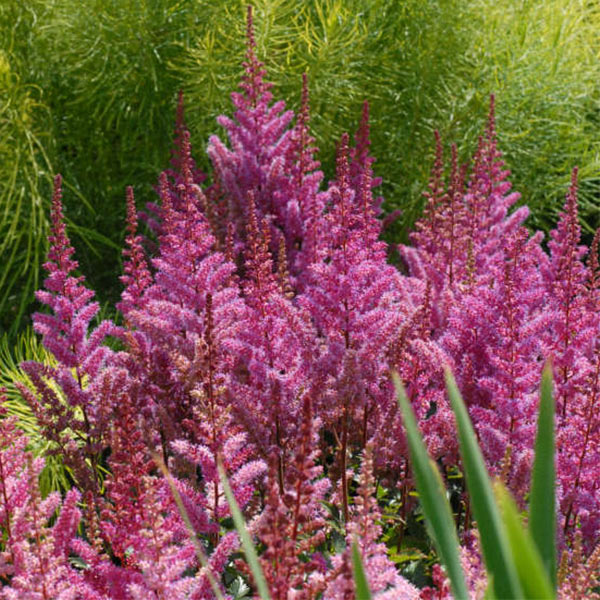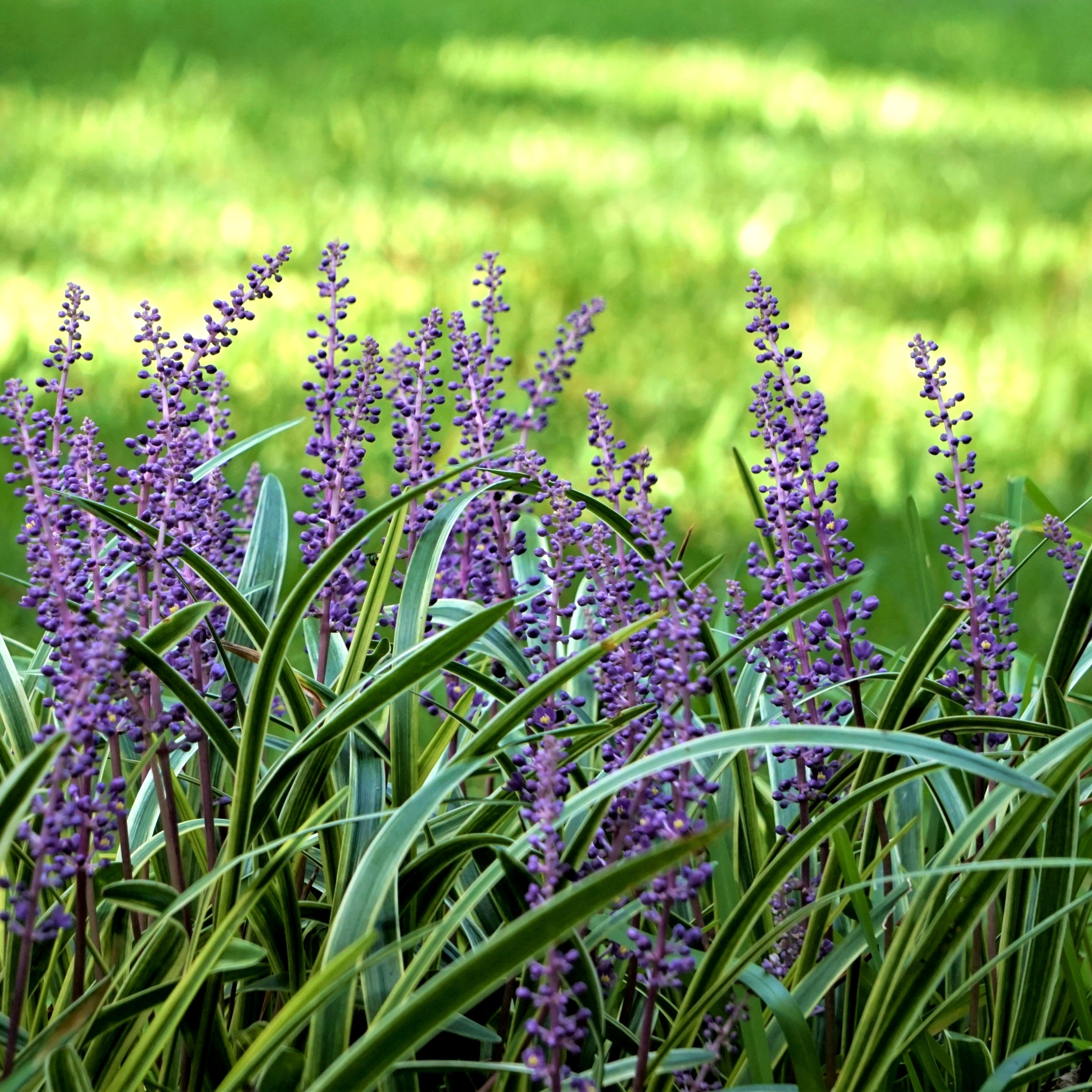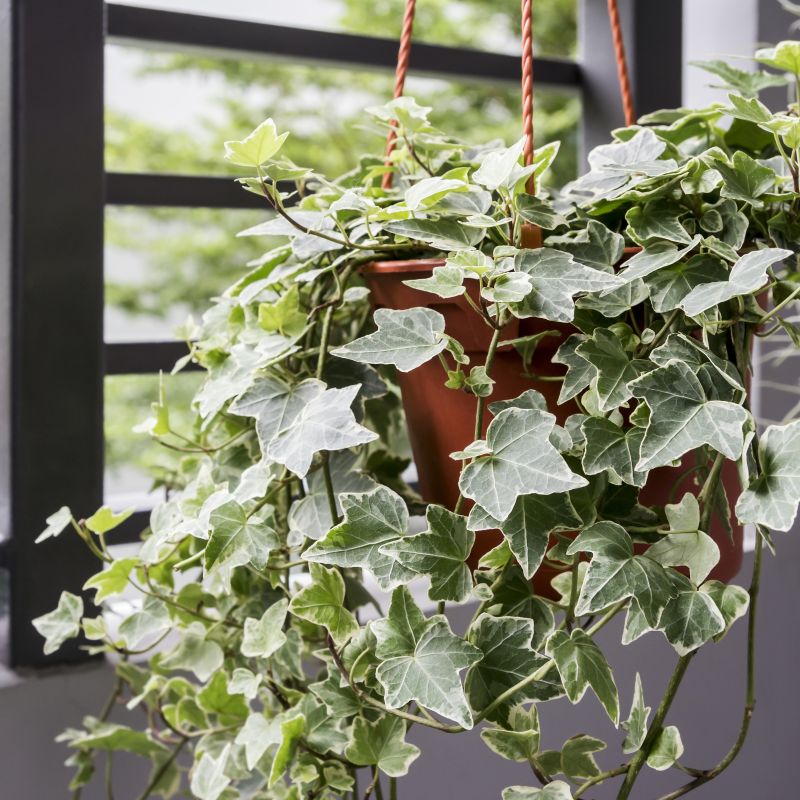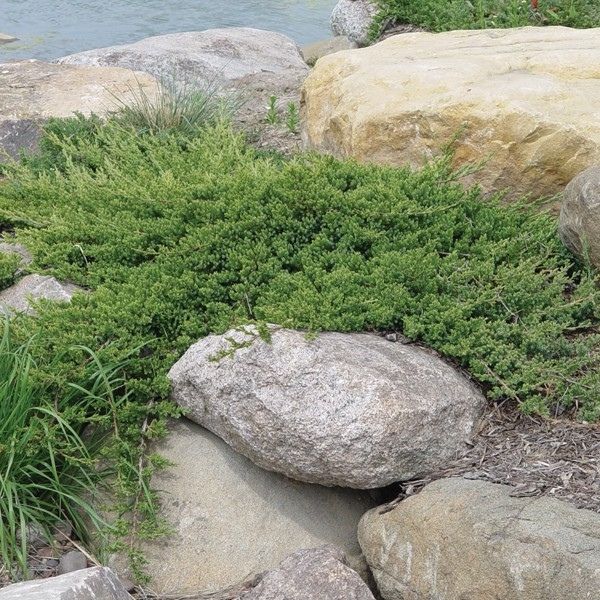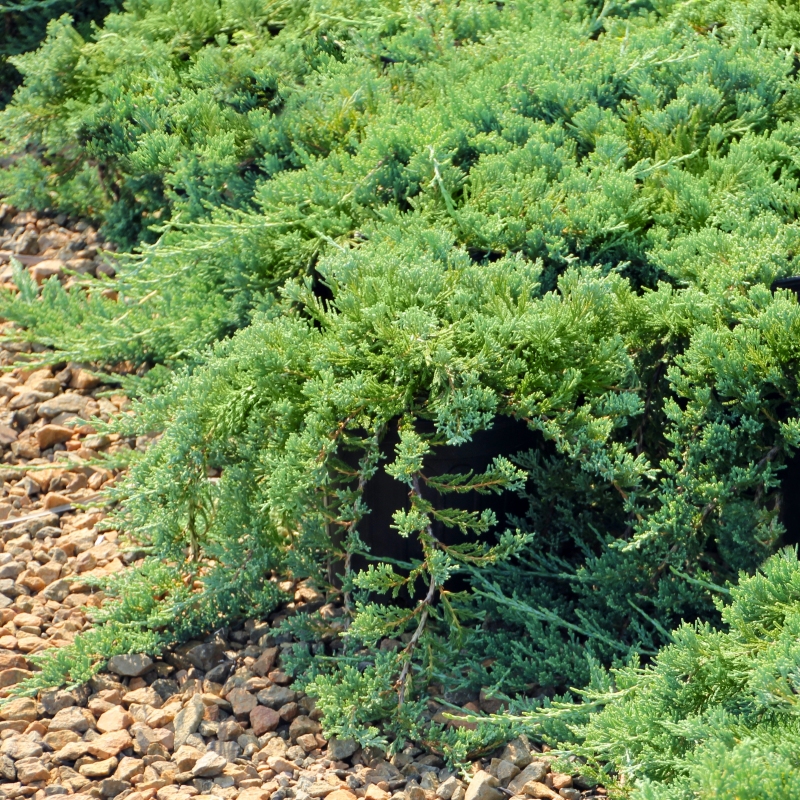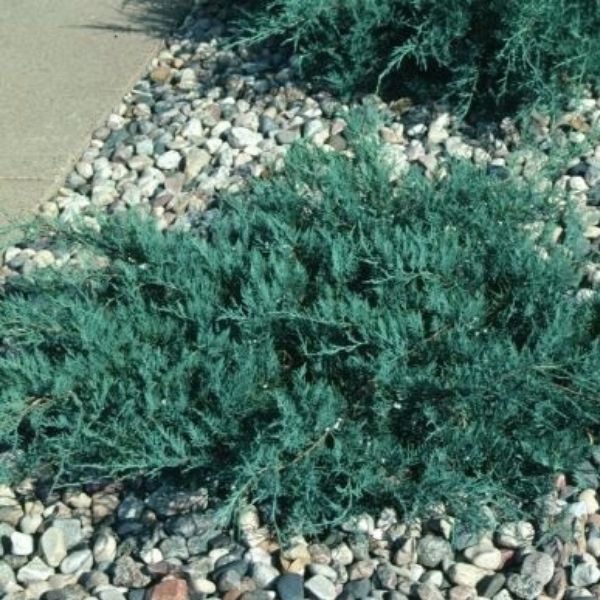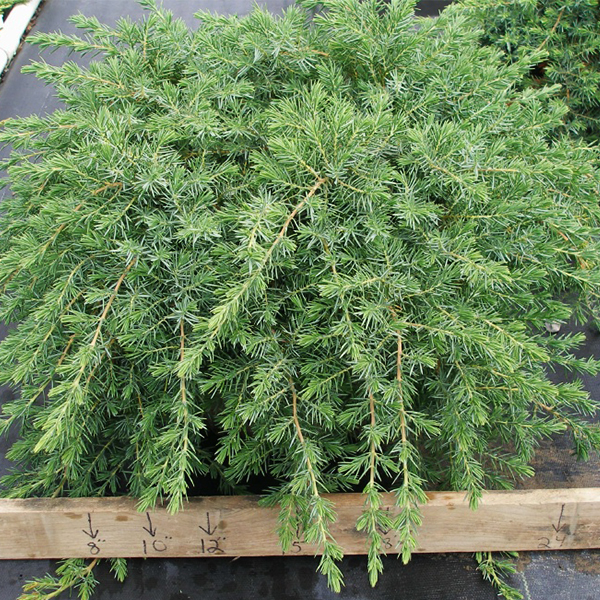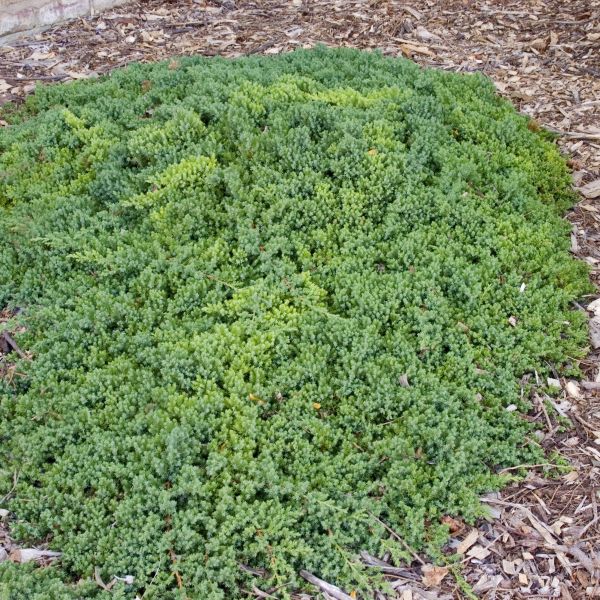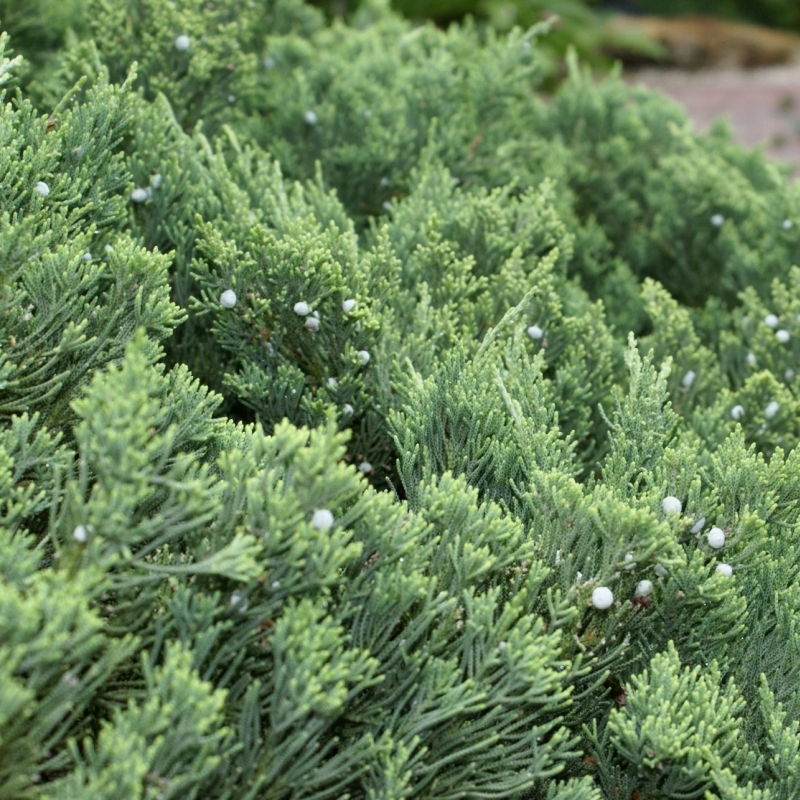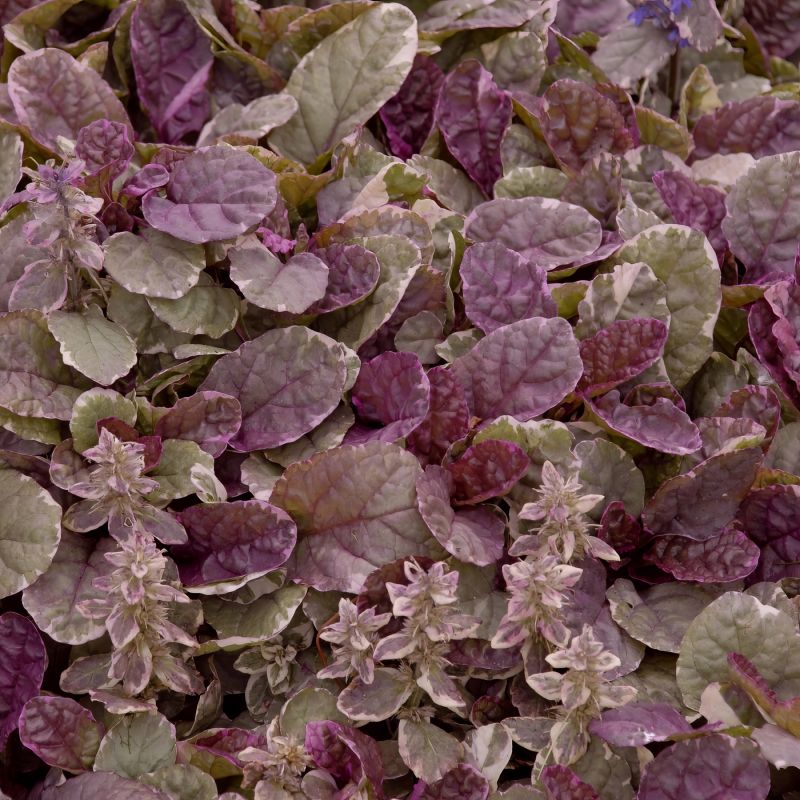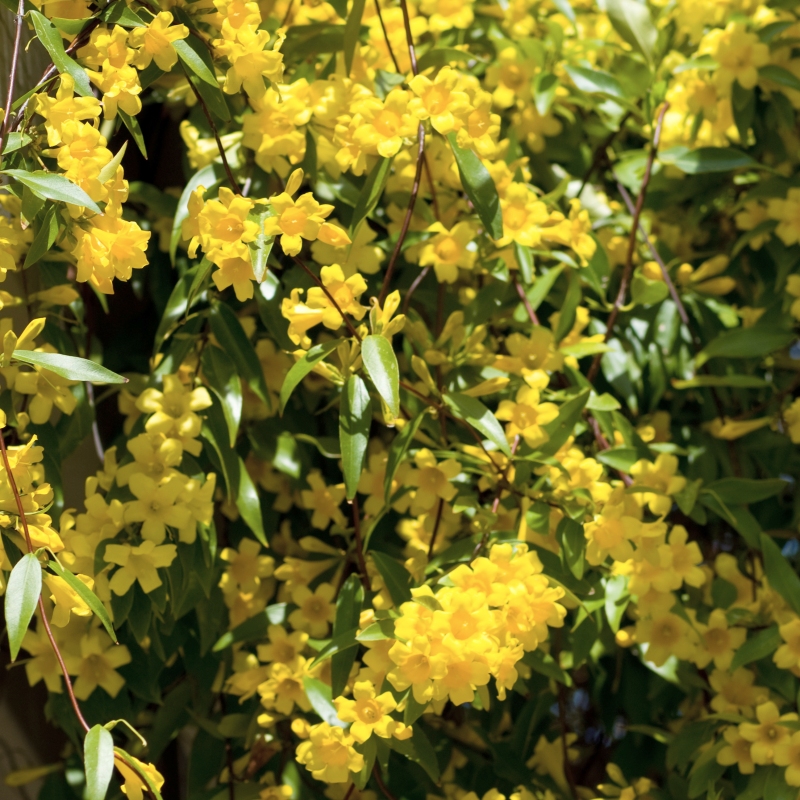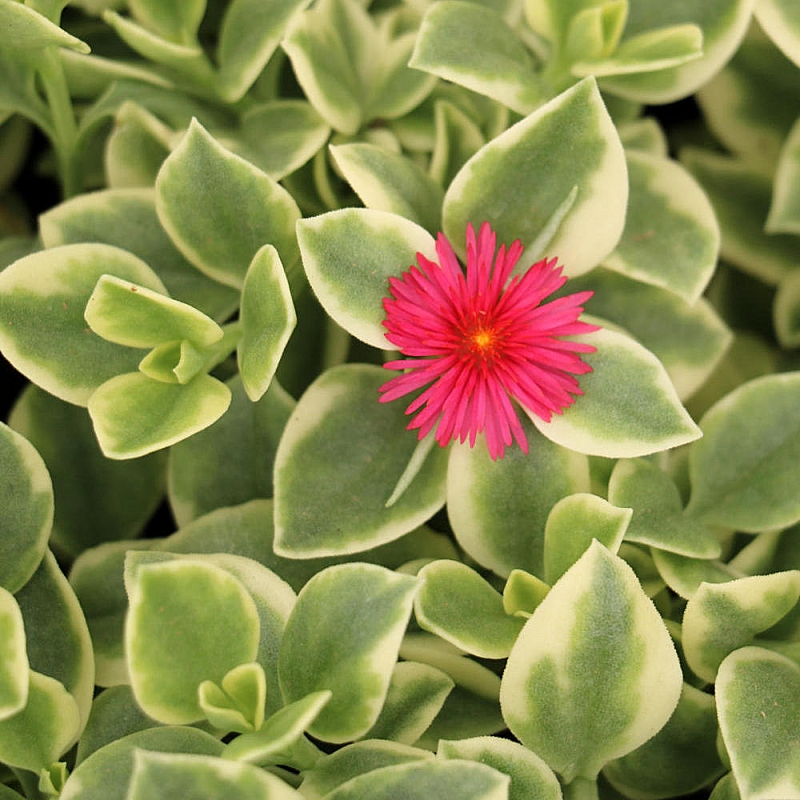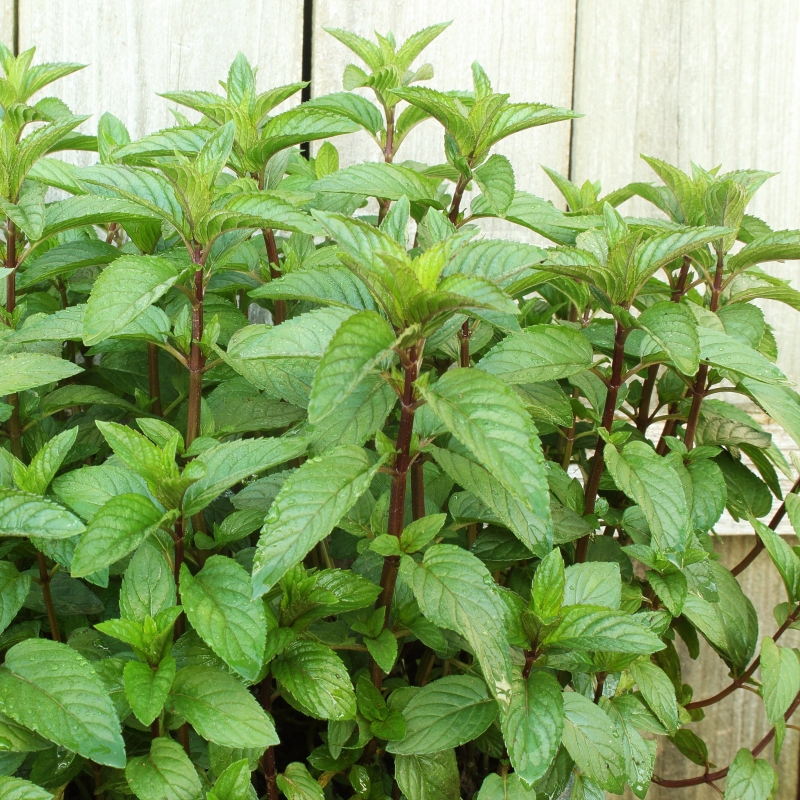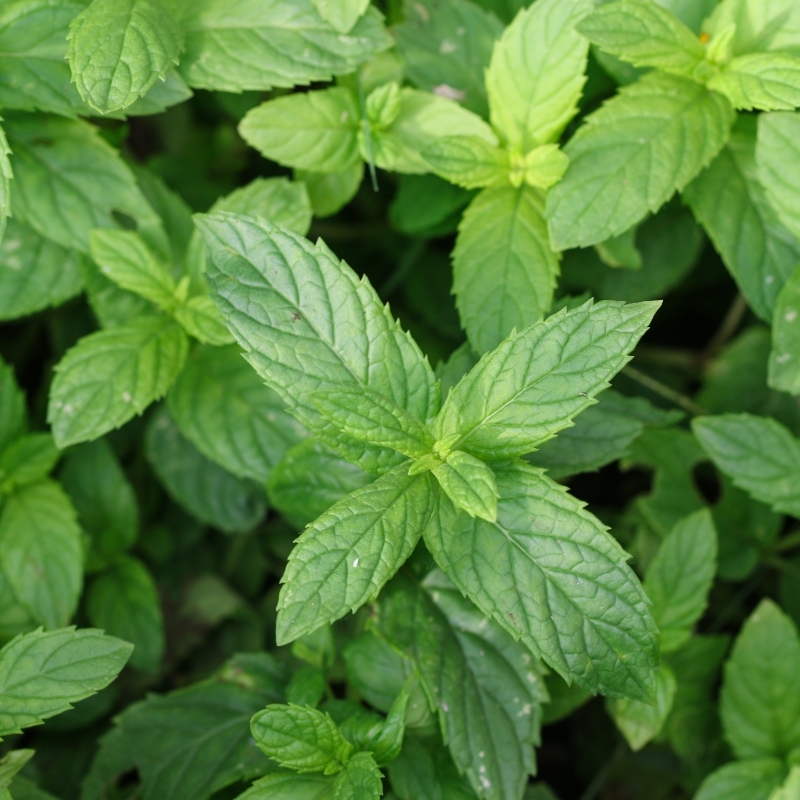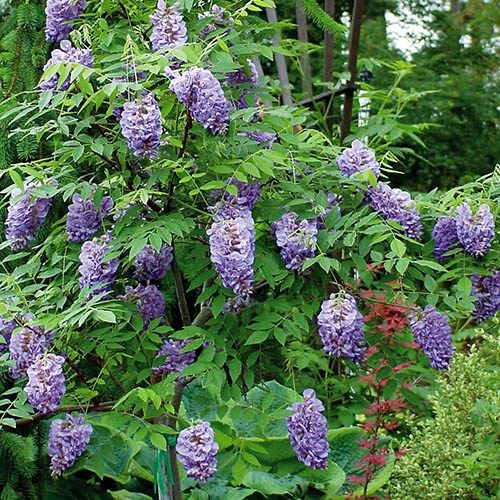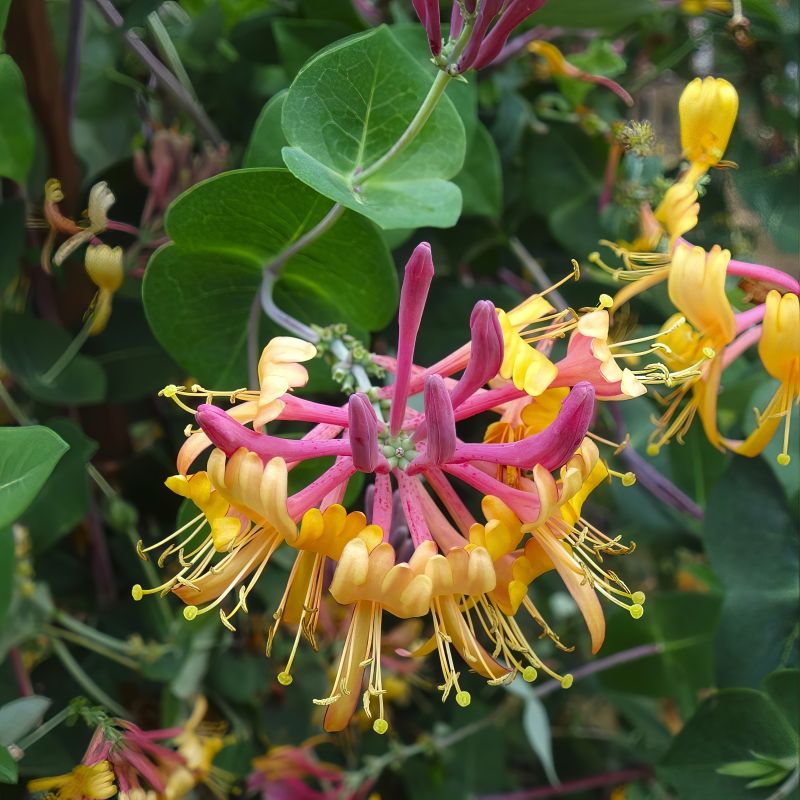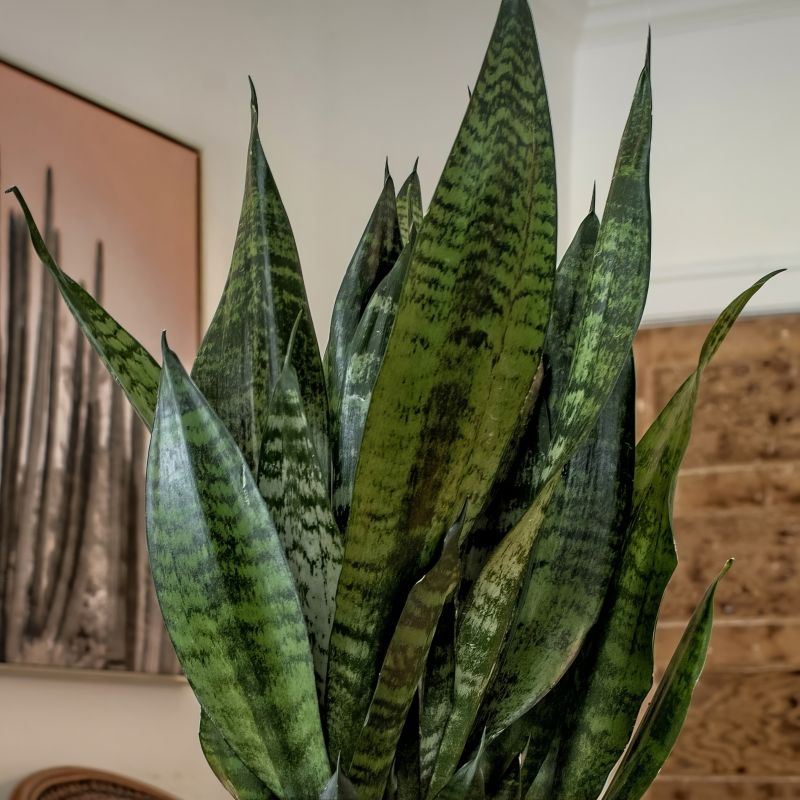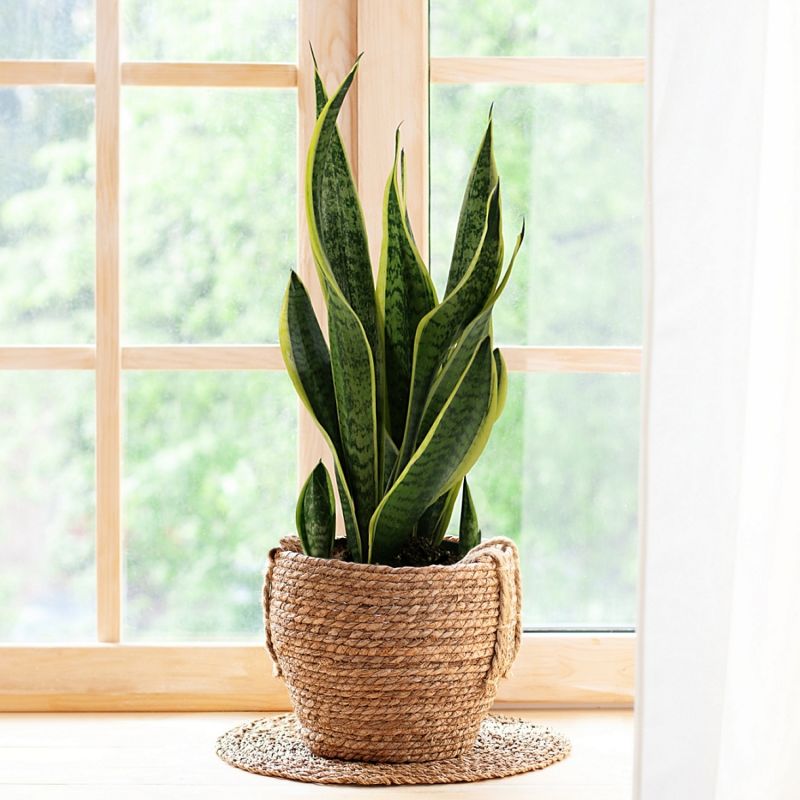

Maggie Daley Astilbe
Astilbe chinensis 'Maggie Daley'
15 reviews


Maggie Daley Astilbe
Astilbe chinensis 'Maggie Daley'
15 reviews
- Long-lasting, vibrant pink blooms add a pop of color to any garden
- Tolerant of both heat and shade, making it versatile for different growing conditions
- Attracts pollinators such as butterflies and bees to your garden
- Ships to 43215 in 7-10 Days
- Free Shipping Over $150
- Plant Arrival Guarantee
- In Stock
- Free Plant Consult
$200
$51.00
$73.00
30% Off
1 Gallon
We are sorry, product is currently out of stock due to seasonal availability. Please check the "Related plants available in your area" section below
Why Maggie Daley Astilbe?
Maggie Daley Astilbe is a popular cultivar of Astilbe chinensis known for its pink, feathery plumes and tolerance for partial shade. It was named after the late wife of former Chicago Mayor Richard M. Daley, who was a supporter of the city's green initiatives. This plant is prized by gardeners for its long bloom time and ability to attract pollinators. It is an excellent choice for adding a pop of color to shaded areas in the garden.
Related plants available in your area
Sunlight
The Maggie Daley Astilbe requires partial to full shade and performs best with dappled sunlight or morning sun with afternoon shade.
Watering
Maggie Daley Astilbe requires regular watering to keep the soil consistently moist. Adequate moisture is crucial, particularly during hot and dry periods.
Fertilizing
The Maggie Daley Astilbe requires a balanced fertilizer with a lower nitrogen content and higher phosphorus and potassium levels. It is important to follow manufacturer instructions and apply the fertilizer in early spring and again in mid-summer for optim
Maggie Daley Astilbe, also known as Astilbe chinensis ‘Maggie Daley’, is a flowering variety of Chinese Astilbe notable for its shiny dark green foliage and striking blooms of lavender-purple flowers. Flowering starts in mid to late summer, later than other astilbes.
The flower plumes are held upright on strong stems, with each plume consisting of hundreds of densely packed tiny flowers, opening in succession to provide a long bloom season.
Above the fern-like shiny dark green foliage, the flowers rise and arch gracefully and as the season progresses, the purple plumes gradually turn a rich caramel color, providing even more winter interest.
This Astilbe grows up to 2.5 feet tall as a max length and spreads 1.5 feet wide. Maggie Daley astilbe is generally low maintenance. It prefers partial shade to full shade with the filtered sun and can only tolerate the full sun in cooler climates with adequate moisture.
This Astilbe thrives in organically rich, evenly moist, well-drained soils. Mulch should be added to maintain moisture. Dryness leads to wilting and quick demise, so make sure soil moisture is always even.
As for pruning, cut flowers and old foliage in late spring to protect the plant from winter damage and promote new growth. The plant is rabbit and deer-resistant and moderately drought-tolerant.
This versatile plant is perfect for shady borders, perennial borders, woodlands, near streams and ponds, or in containers. Order yours today from Shurbhub to get a healthy plant in its best state.
Plant Information:
| Botanical Name: | Astilbe chinensis 'Maggie Daley' |
| USDA Zones: | 4-9 |
| Water: | Moderate to Moist |
| Exposure: | Full Shade |
| Soil Needs: | Well-Drained |
| Mature Height: | 24 - 28 inches |
| Mature Spread: | 16 - 20 inches |







Pollination Info
Pollination Information for Maggie Daley Astilbe (Astilbe chinensis 'Maggie Daley')
Maggie Daley Astilbe is a herbaceous perennial that blooms in late summer. It produces clusters of pink feathery flowers on tall upright stems called panicles. It is a member of the Saxifrage family and is native to China and Japan.
The pollination of Maggie Daley Astilbe is primarily done by bees and butterflies. The flowers of this plant are attractive to pollinators due to their color and fragrance.
The flowers of the Maggie Daley Astilbe are hermaphroditic, meaning they contain both male and female reproductive organs. The reproductive organs are located in the center of the flower, and the petals and sepals serve as protection for the reproductive organs.
When a bee or butterfly lands on the flower, it collects pollen on its body from the flower’s stamen. As the pollinator moves on to other flowers, the pollen is transferred to the flower’s stigma, fertilizing the ovules and producing seeds.
It is important to note that Maggie Daley Astilbe is not self-fertile, meaning it requires cross-pollination from other plants in order to produce viable seeds
In conclusion, the Maggie Daley Astilbe is a beautiful and attractive plant that relies on the pollination services provided by bees and butterflies to reproduce and produce seeds.
FAQ
Maggie Daley Astilbe (Astilbe chinensis 'Maggie Daley') FAQs
What is a Maggie Daley Astilbe plant?
Maggie Daley Astilbe is a perennial plant that belongs to the Saxifrage family and is known for its beautiful plumes of pink flowers. It is a hybrid variety that was developed from Astilbe chinensis. It is named after the late wife of the former Mayor of Chicago, Richard Daley, who was known for her passion for gardening, nature and beautifying the city.
How tall and wide does a Maggie Daley Astilbe plant grow?
Maggie Daley Astilbe can grow up to 24-30 inches in height and 18-24 inches in width.
When does Maggie Daley Astilbe bloom?
Maggie Daley Astilbe blooms in mid to late summer, usually in July or August. The flowers appear as plumes of pink and can last for 4-6 weeks.
What are the ideal growing conditions for Maggie Daley Astilbe?
Maggie Daley Astilbe thrives in moist, well-drained soil and prefers partial to full shade. It can also tolerate some sun if the soil is consistently moist and not too hot.
How often should I water Maggie Daley Astilbe?
Maggie Daley Astilbe requires consistently moist soil, therefore it is important to water it regularly, especially during periods of drought or extreme heat. However, it is important to avoid over-watering as this can lead to root rot.
How do I care for Maggie Daley Astilbe?
To care for Maggie Daley Astilbe, it is important to prune it back after it has finished flowering in late summer. This will help to encourage new growth and prevent the plant from becoming too woody. It is also recommended to fertilize the plant once a year in the spring with a balanced fertilizer to promote healthy growth.
Can Maggie Daley Astilbe be grown in containers?
Maggie Daley Astilbe can be grown in containers, but it is important to choose a large container that will allow the plant to spread its roots adequately. It is also important to ensure that the soil remains consistently moist and that the plant receives adequate shade.
Is Maggie Daley Astilbe deer resistant?
Maggie Daley Astilbe is known to be deer resistant due to its bitter taste and strong scent.
Can Maggie Daley Astilbe be propagated?
Yes, Maggie Daley Astilbe can be propagated through division in the spring or fall. It is best to use a sharp spade to divide the plant into several smaller pieces, making sure each piece has healthy roots.
Planting & Care
Planting and Care for Maggie Daley Astilbe
Planting
Maggie Daley Astilbe is a perennial plant that thrives in moist, well-drained soil. Plant it in a partially shaded area that receives morning sun and afternoon shade. The best time to plant astilbe in the ground is in the spring or fall.
When planting, dig a hole that is twice as wide and deep as the root ball. Mix in organic matter, such as compost or peat moss, into the soil before planting. Place the plant in the hole and backfill the soil, pressing firmly around the base of the plant.
Watering
Astilbe requires consistently moist soil to grow and thrive. Water the plant deeply and regularly, especially during the hot and dry summer months. Avoid watering the plant during the evening to prevent the development of fungal diseases.
Fertilizing
Apply a slow-release fertilizer in the early spring when the plant begins to grow. You can also add compost or organic matter to the top of the soil around the plant to provide nutrients. Avoid over-fertilization as it can lead to weak stems and foliage.
Pruning and Maintenance
Deadhead spent flowers to promote new growth and prevent the plant from self-seeding. Cut back the foliage to the ground in the fall after it has faded and yellowed. This will help prevent pest and disease problems from developing over the winter months.
Astilbe may require dividing every few years to prevent overcrowding and improve plant health. Divide the plant in the early spring before new growth begins, using a sharp knife or spade to separate the roots.
Pest and Disease Control
Astilbe is generally resistant to common pests and diseases, but may be susceptible to powdery mildew. To prevent the development of this fungal disease, provide good air circulation around the plant and avoid overhead watering. Spray the plant with a fungicide if necessary.
Summary
Maggie Daley Astilbe is a beautiful perennial that requires moist, well-drained soil and partial shade to thrive. Water the plant regularly, fertilize it in the early spring, prune it as needed, and prevent pest and disease problems from developing. With proper care, the plant will produce beautiful blooms year after year.
Check Out These Verified Customer Reviews:
Customer Reviews
4.7 out of 5 based on 15 reviews
Thank you! Your review has been submitted.
Website was easy to navigate, ordering process was a breeze.
The flowers were even more beautiful in person, I couldn't be happier with my purchase!
Easy website navigation
Item has been added to your cart.



